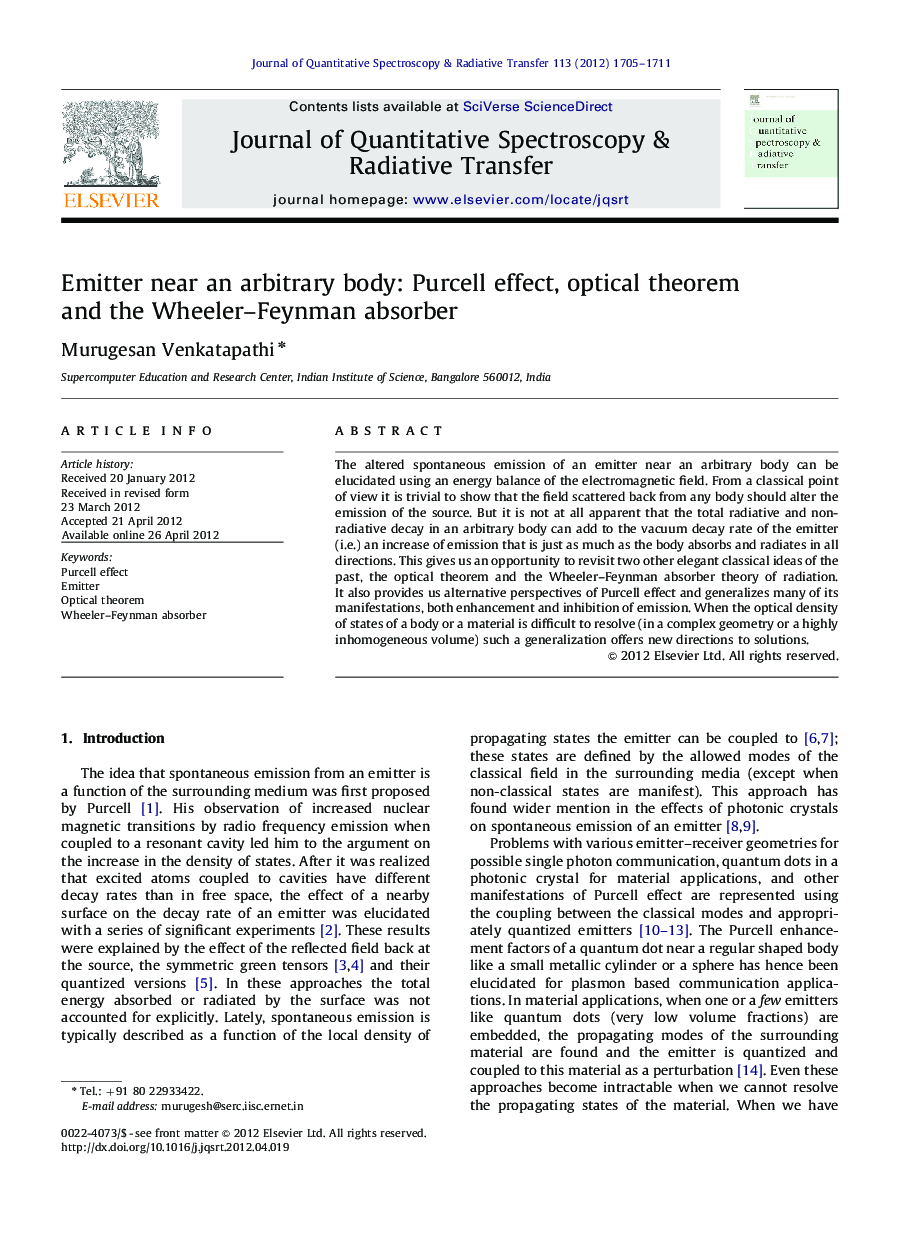| Article ID | Journal | Published Year | Pages | File Type |
|---|---|---|---|---|
| 5429026 | Journal of Quantitative Spectroscopy and Radiative Transfer | 2012 | 7 Pages |
The altered spontaneous emission of an emitter near an arbitrary body can be elucidated using an energy balance of the electromagnetic field. From a classical point of view it is trivial to show that the field scattered back from any body should alter the emission of the source. But it is not at all apparent that the total radiative and non-radiative decay in an arbitrary body can add to the vacuum decay rate of the emitter (i.e.) an increase of emission that is just as much as the body absorbs and radiates in all directions. This gives us an opportunity to revisit two other elegant classical ideas of the past, the optical theorem and the Wheeler-Feynman absorber theory of radiation. It also provides us alternative perspectives of Purcell effect and generalizes many of its manifestations, both enhancement and inhibition of emission. When the optical density of states of a body or a material is difficult to resolve (in a complex geometry or a highly inhomogeneous volume) such a generalization offers new directions to solutions.
⺠Deduction of Purcell effect using optical theorem for a point source. ⺠Account of total radiative and non-radiative decay rate of body. ⺠Purcell effect and the Wheeler-Feynman theory of radiation. ⺠Valid when optical density of states unknown (multiple source inhomogeneous volume).
